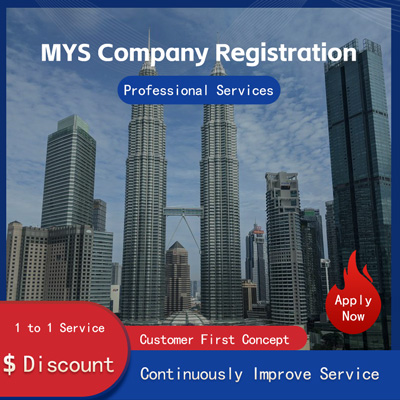
How to Install MySQL on Alibaba Cloud's Linux Server
How to Install MySQL on a Linux Server on Alibaba Cloud
In today's rapidly developing cloud computing technology, more and more enterprises and individuals are choosing the services provided by Alibaba Cloud to deploy their business systems. The Linux operating system, due to its stability and security, has become the first choice for many developers and enterprises. When you need to set up a database environment on your Linux server on Alibaba Cloud, MySQL is a very common choice. This article will provide a detailed introduction on how to install and configure MySQL on your Linux server on Alibaba Cloud, along with some practical tips and precautions.

First, ensure that your Alibaba Cloud server has been successfully created and can be accessed normally. Log in to your Alibaba Cloud console and check if the basic configuration of the server meets your needs. Typically, it is recommended to use Ubuntu or CentOS as the operating system because these two systems have good support for MySQL.
Next, connect to your Linux server via an SSH tool such as PuTTY. If you're not familiar with SSH connections, you can refer to the documentation provided by Alibaba Cloud, which details how to use an SSH client for remote connections. After successfully connecting, update the system's package manager first. For Debian-based systems like Ubuntu, run the following commands
```bash
sudo apt update
sudo apt upgrade
```
For RedHat-based systems like CentOS, execute the following command
```bash
sudo yum update
```
After completing the system updates, you can proceed with installing MySQL. On Ubuntu systems, MySQL can be installed directly using the APT package manager. Enter the following command
```bash
sudo apt install mysql-server
```
During the installation process, you may be prompted to set the root user password. This is a very important step, so please make sure to set a strong password and keep it safe. After installation, you can check the status of the MySQL service using the following command
```bash
sudo systemctl status mysql.service
```
If it shows as active running, this means the MySQL service has been successfully started.
For CentOS users, you can use the YUM package manager to install MySQL. Run the following command
```bash
sudo yum install mysql-server
```
After installation, you also need to start the MySQL service
```bash
sudo systemctl start mysqld
```
To enhance security, it is recommended to run the MySQL security script, which will help you remove anonymous users, disable remote root login, etc. In Ubuntu systems, you can run
```bash
sudo mysql_secure_installation
```
And in CentOS systems, it is
```bash
sudousr/bin/mysql_secure_installation
```
This script will guide you through a series of security setup steps.
After installing MySQL, you may also need to configure MySQL to suit specific application scenarios. For example, if you plan to store large amounts of data in MySQL, adjusting buffer sizes and log file paths is essential. This can be achieved by editing the MySQL configuration file. The location of the configuration file varies depending on the operating system. On Ubuntu, it is located at `/etc/mysql/mysql.conf.d/mysqld.cnf`, while on CentOS it is `/etc/my.cnf`. After making changes, remember to restart the MySQL service for the changes to take effect
```bash
sudo systemctl restart mysql.service
```
Considering network security issues, it is recommended to configure firewall rules to restrict external access to the default MySQL port 3306. You can use tools like iptables or firewalld to set rules. For example, use firewalld commands to allow local access
```bash
sudo firewall-cmd -add-port=3306/tcp -permanent
sudo firewall-cmd -reload
```
Finally, to facilitate managing and monitoring MySQL instances, consider installing graphical management tools such as phpMyAdmin or Navicat. These tools not only provide friendly interfaces but also support complex query operations and performance optimization suggestions.
In summary, installing MySQL on a Linux server on Alibaba Cloud is not complicated; just follow the above steps to complete it smoothly. Throughout the process, maintaining good habits, such as regularly backing up data, monitoring server status, and promptly updating patches, is crucial for ensuring the long-term stable operation of the database system. It is hoped that this article can provide valuable references and help you successfully build your own MySQL environment.
Helpful (0)
No help (0)
Still have questions after reading? More than 98,000 users have contacted us. Please fill in the following information to obtain business information.

Service Scope
MoreRecommended for You
- A Crucial Step in Trademark Registration Why You Can't Skimp on CR Fee
- How Much Does It Cost to Register a Trademark in the U.S.? A Clear Breakdown of Fees!
- Want to Register a Trademark in the U.S.? Master These Key Steps to Launch Your Brand Smoothly!
- How to Apply for a US Trademark? 10 Key Tips to Nail It in One Go!
- How to Successfully Register a Trademark in the U.S. for a Singapore Co. A Practical Guide
- How to Apply for a US Trademark After Registering a Company in Singapore? A Detailed Guide on Costs and Process
- A Comprehensive Analysis of US Companies Registering Trademarks in China How Much Do You Know?
- Guide to Registering a U.S. Trademark for Singapore Businesses Costs, Process Practical Tips
- How to Register a Trademark in the U.S. for a Shenzhen Company? Here's a Complete Guide!
- U.S. Trademark Registration Guide Step-by-Step Process Key Considerations
- Things to Know About U.S. Trademark Registration Is a Business License Needed? Cost Breakdown Here
- Shenzhen Startups Must Read US Trademark Registration Requirements Process Explained
- How to Register a Company and Apply for a Trademark in the U.S. What Documents and Procedures Are Needed?
- How to Easily Register a Company Trademark in the U.S. and Hong Kong - A Detailed Guide!
- 7 Key Tips You Must Know to Apply for a Trademark in the U.S.
- Do You Need a Trademark to Establish a Subsidiary in Hong Kong? A Deep Dive into Why This Step is Crucial
- Hong Kong Trademark Registration Costs Explained Boosting Business Globalization
- Trademark Registration in the U.S. Company or Individual? Let's Find Out!
- How to Register a Chinese Trademark in the U.S.? A Complete Guide with Practical Tips
- U.S. Trademark Registration Costs Explained All You Need to Know!


 ONE
ONE








Customer Reviews
Small *** Table
December 12, 2024The experience was very good. I was still struggling to compare it with other companies. I went to the site a few days ago and wanted to implement it as soon as possible. I didn't expect that everything exceeded my expectations. The company is very large, with several hundred square meters. The employees are also dedicated and responsible. There is also a wall of certificates. I placed an order on the spot. It turned out that I did not make a wrong choice. The company's service attitude is very good and professional. The person who contacted me explained various things in detail in advance. After placing the order, the follow-up was also very timely, and they took the initiative to report the progress to me. In short, I am very satisfied and recommend this company!
Lin *** e
December 18, 2024When I first consulted customer service, they recommended an agent to me. They were very professional and patient and provided excellent service. They answered my questions as they came in. This 2-to-1 service model is very thoughtful. I had a lot of questions that I didn’t understand, and it’s not easy to register a company in Hong Kong. Fortunately, I have you.
t *** 7
December 19, 2024I originally thought that they only did mainland business, but I didn’t expect that they had been doing Hong Kong business and were doing very well. After the on-site interview, I decided to ask them to arrange the registration of my Hong Kong company. They helped me complete it very quickly and provided all the necessary information. The efficiency was awesome. It turns out that professional things should be done by professionals.👍
b *** 5
December 16, 2024In order to register a company in Hong Kong, I compared many platforms and stores and finally chose this store. The merchant said that they have been operating offline for more than 10 years and are indeed an old team of corporate services. The efficiency is first-class, and the customer service is also very professional.